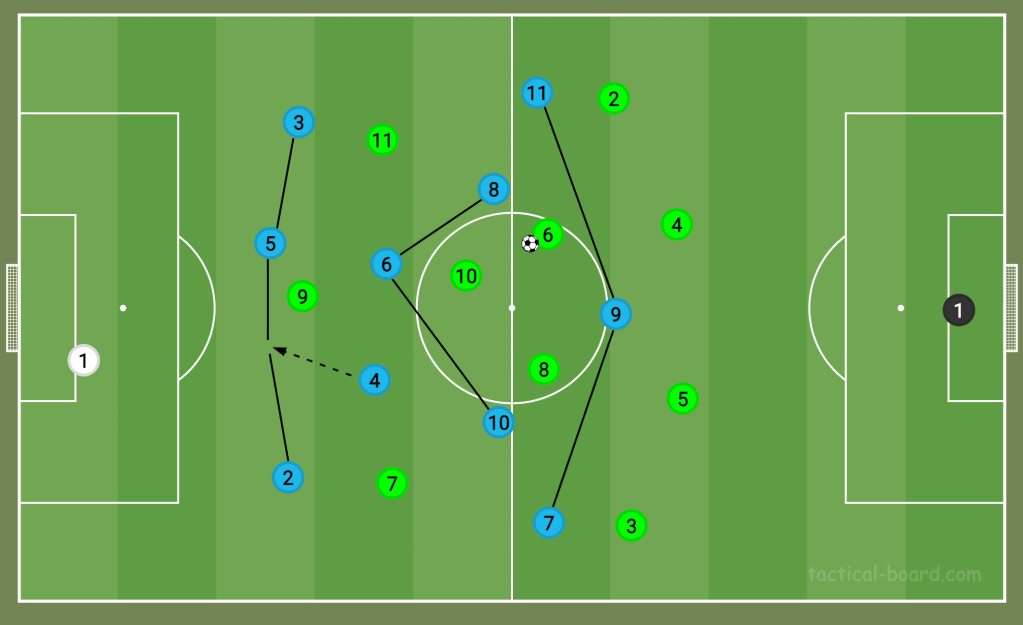We’ve done the inverted full-back, the decline of the No10, and the counter-attacking trend. The latest major tactical advancement was the ability for teams to play multiple formations for different phases of play. They might start with a back-three during build-up, progress the ball in a 4-3-3, and defend in a 4-4-2. So what’s next? Well, it’s a trip down memory lane. ‘Total football’ is coming back.
‘Total football’ as we know it was pioneered by Johan Cruyff as Barcelona’s manager in the 1990s. His team played fluid, attacking football which was both attractive on the eye and successful in practice. It’s Cruyff with whom we credit the invention of ‘total football’, but it was the work of his former coach Rinus Michels that shaped Cruyff’s managerial philosophy. The Dutch World Cup team of 1974, managed by Michels, was the first team to play ‘total football’ on the world stage. The objective was to control possession of the ball, to manipulate space (applying attacking coverage all over the pitch), and for the players to be adept in many positions — allowing for constant and seamless rotations. It was the Dutch reaction to Italian football’s Catenaccio, a negative style based purely around defending deep and keeping the ball out of the net.


The ‘total football’ formation — loose as it was — was similar to the 4-3-3, though it used a sweeper instead of a centre-back, meaning it looked more like a 3-box-3. To date, this formation provides the most passing triangles of any shape ever played. Possession football cannot be better achieved than by playing a 3-box-3. The problem was, there was no emphasis on defence besides keeping the ball away from the opposition. Neither the Dutch team of ‘74 nor Cruyff’s Barcelona team during the ‘90s had an off-the-ball plan which lasted.
…Not until now. With teams able to play various formations within one game now, the missing piece of ‘total football’ can (and will) be placed. The loose shape used by Michels’ Holland and Cruyff’s Barcelona (the 3-box-3) will return, but under the guise of prevalent, modern formations. Manchester City manager Pep Guardiola has started to test it, and Graham Potter has also spotted a gap in the market.
Guardiola has tried placing his right-back in midfield during the build-up and progression phases. Along with a goalkeeper and a remaining three-man defence, the inverted right-back and defensive midfielder can help overload any team looking to press in the first phase, as seen below. The midfield box is pivotal for possession too.

The other iteration is easier to create. The centre-back just steps up and joins the midfield, as the old-fashioned ‘sweeper’ or libero used to do. Throughout Michels’ later stint as Holland manager, the player he used here was Frank Rijkaard. It can also be done the other way around by playing a back-three of two full-backs and one centre-back, and having one of the deep midfielders drop in as a makeshift centre-back to make a back-four. There were traces of this in Spain’s 2022 World Cup team last month, with Rodri filling in at centre-back. It was a good way for them to control possession and get both Rodri and Sergio Busquets into the starting line-up.

Graham Potter’s Chelsea are trying something new as well. The left-back will advance level with the right-winger, and the left-winger will invert. Admittedly, this is currently just a good way for Chelsea to create a back-three in build-up. Still, it’s just a small step from this to achieving something reminiscent of ‘total football’, as the second diagram illustrates below.


‘Total football’ will return, this time with a sound defensive solution. It can easily make a 4-3-3, as Spain and Manchester City have shown, and can transition into a 3-4-3 out of possession too. Twelve passing triangles, complete fluidity, and a guarantee of disrupting opposition sides in their defensive shapes. Thank you, Rinus. Thanks, Cruyff.

